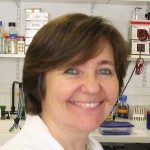Lien vers Pubmed [PMID] – 35358211
Lien DOI – 10.1371/journal.pone.0265511
PLoS One 2022 ; 17(3): e0265511
In many Gram-negative bacteria, the stress sigma factor of RNA polymerase, σS/RpoS, remodels global gene expression to reshape the physiology of quiescent cells and ensure their survival under non-optimal growth conditions. In the foodborne pathogen Salmonella enterica serovar Typhimurium, σS is also required for biofilm formation and virulence. We have previously identified sRNAs genes positively controlled by σS in Salmonella, including the two paralogous sRNA genes, ryhB1 and ryhB2/isrE. Expression of ryhB1 and ryhB2 is repressed by the ferric uptake regulator Fur when iron is available. In this study, we show that σS alleviates Fur-mediated repression of the ryhB genes and of additional Fur target genes. Moreover, σS induces transcription of the manganese transporter genes mntH and sitABCD and prevents their repression, not only by Fur, but also by the manganese-responsive regulator MntR. These findings prompted us to evaluate the impact of a ΔrpoS mutation on the Salmonella ionome. Inductively coupled plasma mass spectrometry analyses revealed a significant effect of the ΔrpoS mutation on the cellular concentration of manganese, magnesium, cobalt and potassium. In addition, transcriptional fusions in several genes involved in the transport of these ions were regulated by σS. This study suggests that σS controls fluxes of ions that might be important for the fitness of quiescent cells. Consistent with this hypothesis, the ΔrpoS mutation extended the lag phase of Salmonella grown in rich medium supplemented with the metal ion chelator EDTA, and this effect was abolished when magnesium, but not manganese or iron, was added back. These findings unravel the importance of σS and magnesium in the regrowth potential of quiescent cells.



